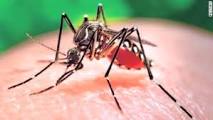The study led by Indira Mysorekar from Washington University School of Medicine in St Louis showed that the drug, Hydroxychloroquine, works by inhibiting autophagy, a process by which cells remove toxins and recycle damaged components to generate energy.
Since the 2015 Zika epidemic in Brazil, researchers have been scrambling to find out why it caused birth defects and how to stop it.
They said the drug appeared to reduce transmission of Zika virus from pregnant mice to their foetuses.
The researchers showed that Zika virus may manipulate this process in the placenta to infect the developing foetus.
"Zika virus infection during pregnancy can lead to a devastating array of birth defects, including microcephaly, abnormal reflexes, epilepsy, and problems with vision, hearing and digestion," said Catherine Spong, Deputy director of US National Institutes of Health's Eunice Kennedy Shriver National Institute of Child Health and Human Development (NICHD), which funded the work.
"This study suggests that treating Zika-infected pregnancies with autophagy-inhibiting drugs may lower the risk of these abnormalities, but more research is needed to confirm these findings," Spong added.
Previous research had established that autophagy plays an important role in the placenta's defence against bacteria and other disease-causing agents.
In the current study, the researchers demonstrated that Zika virus infection activates autophagy in lab cultures of human placental cells and in the placentas of mouse models of Zika virus transmission.
For the study, researchers administered hydroxychloroquine, a US Food and Drug Administration (FDA)-approved drug known to inhibit autophagy, to Zika-infected pregnant mice.
They results showed that mice treated with hydroxychloroquine have lower levels of detectable virus in their placentas and less placental damage, compared to untreated mice.
The treatment also restricted Zika infection in the foetal head and led to a larger foetal body size, suggesting that the drug limits cross-placental transmission of the virus.
The new findings have been published online in the Journal of Experimental Medicine.
